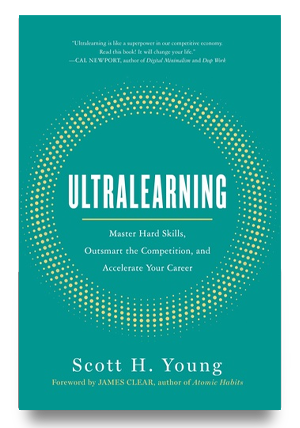Flow is the mental state of complete engagement. It happens when you are fully immersed in an activity that is neither too difficult to be frustrating, but not so easy as to be boring. First described by Dr. Mihály CsÃkszentmihályi, the concept became popular because it was seen as a key to both performance and happiness.
Flow is great. I’ve previously written about it before, and I believe that if your regular work doesn’t offer you at least some opportunities for flow, it’s unlikely you’ll be passionate about it enough to succeed at it.
But there’s a myth that flow also maximizes learning. That, to get the fastest learning rate, you should be in a state of flow-like engagement with the learning material. This is likely false.
Deliberate Practice and Frustrating Difficulty
The idea that flow would also maximize learning is an optimistic one. After all, wouldn’t it be great if the state of being which produces pleasure and happiness also causes the fastest growth?
From Anders Ericsson’s research on deliberate practice, however, I have serious doubts about this being true. Deliberate practice, the activity tightly coupled with skill development, is also a grind. Far from being a flow-like state of optimal difficulty, deliberate practice is strenuous and often frustrating.
Flow comes from a balancing point of difficulty. It occurs when you have enough mastery to perform well, but the task is not so trivial as to allow distractions to enter the mind.
Deliberate practice is a recalibration of that balancing point. Personal experience tells me that ideal deliberate practice sits much closer to frustration than to flow. Learning something new, in the most efficient way possible, is exhausting.
Flow is Great for Work, Bad for Learning
Flow is an equilibrium, deliberate practice is a disequilibrium. This isn’t the only area of human psychology or biology where we see growth coming from disequilibrium. If you want to gain strength, most of the gain comes from the final, agonizing repetition, not the first ones of mild exertion.
Another hint to the nonoptimality of flow for learning is in Dr. Ericsson’s own distinction between practice and work. Work is the performance of your skill to useful ends—a violinist concerto or a basketball game. Practice is pushing your performance to a new level—repeating the hardest few bars of a solo or perfecting your layup. Games and concerts are fun, drills aren’t.
Flow is an ideal state for working—it shows you’ve achieved enough mastery to perform well, but that the task is still at your level. As such, I think it’s worth striving for in your regular day-to-day tasks.
Learning is not optimized by playing at your level. It’s optimized by playing above it, where you feel you can barely cope.
Achieving Fluency
Learning a new language is a great example of this. When practicing, there are two points worth noting: flow and mastery.
The first is the point of flow—this when the language feels challenging, but not overwhelming. In a beginner, that could mean parroting premade sentences. In an intermediate to advanced speaker, that could mean having conversations along the lines you normally follow.
The second is the point of mastery. This point is where you are learning the most new things. It is painful and often awkward, but it results in the fastest growth. For a beginner that means trying to speak in the language, before one feels comfortable. For more advanced speakers, it is putting deliberate effort into improving your accent, grammar or adding new elements of vocabulary.
Benny Lewis, who speaks nearly a dozen languages fluently, is often able to achieve conversational fluency in only a couple months with a new language. His method is dedicated to this uncomfortable point of speaking before you’re ready in the early phases, and an insistence on corrections in the later phases.
I met Benny when he was living in Berlin. Despite only having learned German for two months at the point when I met him, he was already speaking better German than other people we met who had lived there for years.
No Pain, No Gain
This entire article may sound overly discouraging. After all, if optimal learning is frustrating or painful, isn’t it unrealistic to expect people to do it?
Learning may have some short-term intensity, but the rewards are great too. Immersion in a language can have some short-term pain, but every gain you make in speaking ability is satisfying.
I remember some hard moments with near non-existent French when I first moved to France, but being able to have whole conversations in French just a few months later was rewarding enough that I’m convinced I’ll learn more languages in the future.
Working through mathematical problem sets during the MIT Challenge was often overwhelming. But being able to cover the material so quickly, hooked me onto learning new technical concepts in the future.
Treating learning like exercise is a big shift for many students. Because they’ve largely used passive methods which are considerably less intense, they’re also used to spending a lot more time studying. Studying is better seen as a series of sprints than as an endless jog.
I’ll admit, pushing hard to get to the next level of ability isn’t always fun. But because you achieve growth faster, you don’t need to spend as much time. I’d rather have some moderately intense bursts with more downtime than endless library study sessions.
What Does This Mean for You?
I’ve found that maximum learning occurs at an intensity that is uncomfortable to most people. Possibly too uncomfortable for many students who are used to learning at much closer to a flow-like state of effortless engagement.
As a result, full intensity might not work for all tasks if you’re unable to withstand the discomfort. Running until you puke probably isn’t the best way to start a habit of regular exercise.
Instead, I’d suggest dialing up the intensity slowly. Here’s some things you can do:
- More active recall. Active recall is problem sets, flashcards or anything where you are forced to produce an answer from memory. Passive recall is re-reading notes or watching videos.
- More problem solving. Solve new problem types to test your knowledge in new areas. Pretend you’re teaching the solution method for old problem types.
- Ratchet up the environmental difficulty. New to a language? Try speaking it with a native, even if only for a sentence or two. Advanced in a language? Try delivering a speech, writing an article or training yourself to reduce your accent.
Because optimal learning isn’t necessarily optimal enjoyment, this also means there will often be a tradeoff between the two. You want progress to be intense enough to reach your goals in a timely fashion, but not so intense you lose your desire to learn the subject at all. Where you strike that balance will probably depend on what your goal is and how much motivation you have.


 I'm a Wall Street Journal bestselling author, podcast host, computer programmer and an avid reader. Since 2006, I've published weekly essays on this website to help people like you learn and think better. My work has been featured in The New York Times, BBC, TEDx, Pocket, Business Insider and more. I don't promise I have all the answers, just a place to start.
I'm a Wall Street Journal bestselling author, podcast host, computer programmer and an avid reader. Since 2006, I've published weekly essays on this website to help people like you learn and think better. My work has been featured in The New York Times, BBC, TEDx, Pocket, Business Insider and more. I don't promise I have all the answers, just a place to start.